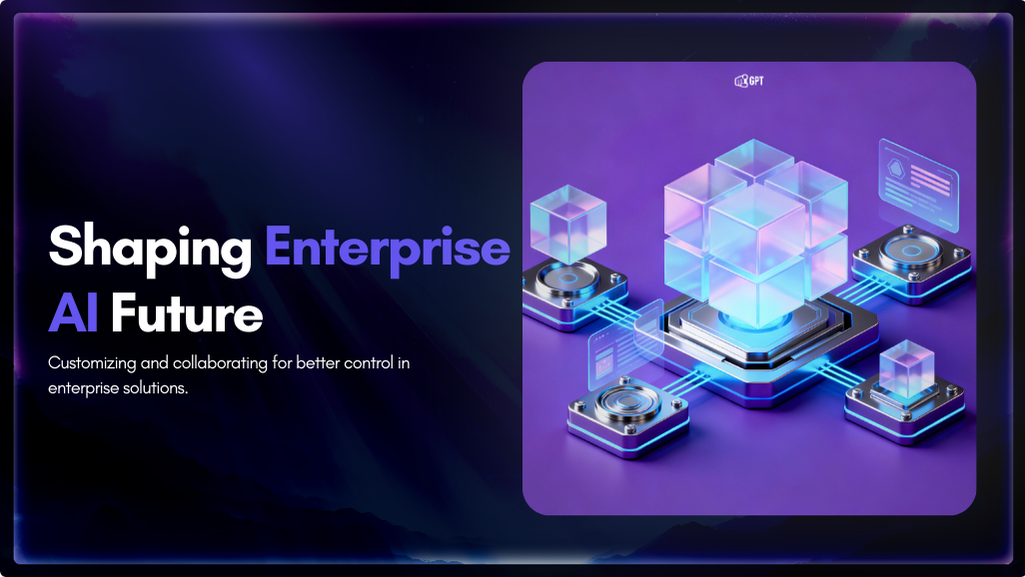Human-in-the-Loop (HITL) AI: What It Is, Why It Matters, and How It Works



Human-in-the-Loop (HITL) brings human oversight into key stages of the AI lifecycle, improving model accuracy and enabling AI to handle complex, real-world scenarios.
By combining human judgment HITL addresses common issues in AI systems, such as errors and biases, which can significantly impact outcomes.
In sensitive sectors, HITL is essential to ensuring both accuracy and trust in AI outputs. It allows AI systems to adapt to complexities and exceptions, providing more reliable support in critical applications.

Human-in-the-Loop AI combines human oversight with AI’s powerful processing to create a system that learns and adapts over time. While AI can process large datasets efficiently, it lacks the nuanced judgment humans bring, especially for:
While AI is trained on large datasets and can generate responses, it often lacks the domain specific understanding and nuanced decision-making capabilities inherent to human judgment.
In Human-in-the-Loop AI, humans are involved in stages like data collection, model training, and ongoing monitoring. This collaborative framework makes AI systems more reliable, ethical, and adaptive across various industries.
Human-in-the-Loop (HITL) AI has several important advantages that improve the effectiveness and reliability of artificial intelligence systems.
HITL AI increases accuracy in predictions and decisions. Human experts give valuable feedback during the training phase, correcting errors and refining model outputs. This process helps models learn from real-world details that may not be in the training data.
For example, in medical imaging, radiologists can adjust AI-generated diagnoses based on their expertise, resulting in more accurate outcomes.
HITL AI helps identify and reduce biases in machine learning models. Human oversight ensures that different perspectives are considered during data annotation and model evaluation. Involving people from various backgrounds lowers the risk of reinforcing existing biases in training datasets.
This is especially important in applications like algorithms, where biased decisions can have significant social effects.
HITL AI enhances transparency in AI systems. Human involvement allows for better interpretation and clarification of AI decisions. When humans participate in the decision-making process, they provide context and reasons for specific outcomes.
This is important in regulated industries like finance and healthcare, where understanding the reasoning behind automated decisions is necessary for compliance and ethical standards.
HITL makes a learning overtime environment for AI models. Human experts interact with the system to find areas for improvement and give ongoing feedback. This interaction helps models adapt over time, becoming more effective as they encounter new data and situations.
In customer service applications, human agents can identify common issues that arise during interactions, enabling the AI to learn and improve its responses.
HITL AI allows for real-time human intervention. In high-stakes environments like autonomous vehicles and financial trading systems, having a human operator ready to step in can prevent serious failures.
This oversight ensures that AI systems align with human values and safety standards, especially in unpredictable situations.
HITL AI lets organizations customize their systems based on specific needs and contexts. Human input helps fine-tune algorithms to match organizational goals and user preferences.
In e-commerce platforms, human feedback can adjust recommendation algorithms to reflect changing consumer trends or seasonal preferences, leading to better user satisfaction.

Human-in-the-Loop (HITL) AI integrates human feedback at various stages of machine learning (ML) and artificial intelligence (AI) development. This structured process improves model accuracy and adaptability, addressing the limitations of fully automated systems. The key mechanisms within HITL are:
The HITL process begins with data annotation, where human annotators label raw data to create well-defined datasets. This step involves:
For example, in a computer vision task, annotators might highlight specific objects in images or delineate areas of interest in medical scans. This labeled data serves as the foundation for training AI models, ensuring they learn from high-quality, relevant examples.
Once the data is annotated, it is used to train machine learning algorithms. During this phase, human expertise is vital for:
In supervised learning scenarios, the model learns to make predictions based on the provided labeled examples. The quality of the training data directly influences the model’s performance, making human involvement essential for achieving high accuracy.
After training, the model undergoes rigorous testing and evaluation. In this phase:
Human evaluators focus particularly on uncertain cases or instances where the model’s confidence is low. By providing corrections and additional context, they refine the AI’s decision-making process.
A defining characteristic of HITL is its continuous feedback loop. After deployment:
This interaction enables humans to provide corrective feedback, which is then used to iteratively retrain and improve the model.
Active learning is a specific strategy within HITL that emphasizes human involvement when models face uncertainty. In this approach:
This not only enhances model performance but also allows for more efficient use of human resources by focusing efforts on challenging cases.
Combining HITL at both the beginning and end of the AI lifecycle maximizes its benefits. Initially, humans curate raw data and create labeled datasets to ensure quality training inputs. After training, they review AI outputs to correct errors and refine decisions. This hybrid approach fosters a powerful loop where both AI and humans continuously improve their respective capabilities over time.
In summary, the structured mechanisms of HITL AI effectively leverage human intelligence while capitalizing on machine learning capabilities. This leads to more reliable and adaptable systems across various applications.
Human-in-the-Loop (HITL) in AI chatbot refers to the practice of adding the human involvement in the decision-making processes of chatbots. This framework enables human operators to participate actively in various stages of interaction, especially in scenarios that require higher cognitive skills or ethical considerations.
This integration of human intelligence enhances the chatbot’s effectiveness, providing a more comprehensive and satisfactory user experience.
Implementing Human-in-the-Loop (HITL) AI systems presents several challenges that organizations must navigate to achieve optimal performance and efficiency.
One of the primary challenges of HITL AI is scalability. Involving human experts at multiple stages of the AI lifecycle can significantly slow down processes. As the volume of data increases, the demand for human input can become a bottleneck.
For instance, in applications requiring real-time decision-making, such as autonomous vehicles or fraud detection, delays in human feedback can hinder the system’s responsiveness and effectiveness.
Engaging human experts incurs additional costs. Training and maintaining a workforce capable of providing high-quality feedback is resource-intensive.
Organizations may need to invest in ongoing training programs to ensure that human reviewers stay updated with the latest developments in AI technology and domain-specific knowledge. This financial burden can be particularly challenging for smaller businesses or startups with limited budgets.
Finding the right balance between automation and human oversight is critical. Excessive reliance on human input can negate many advantages of automation, such as speed and efficiency.
Conversely, insufficient human involvement may lead to inaccuracies and misjudgments in AI outputs. Striking this balance requires careful consideration of the specific application and its context, as well as ongoing evaluation of system performance.
Integrating HITL systems into existing workflows can be complex. Organizations often face challenges related to data compatibility, system interoperability, and user training.
Ensuring that human reviewers can effectively interact with AI systems requires thoughtful design and implementation. Additionally, organizations must establish clear protocols for how human feedback is incorporated into the AI training process.
While HITL aims to mitigate bias in AI systems, it can inadvertently introduce new biases if not managed carefully. Human reviewers bring their own perspectives and experiences, which can influence their feedback and decisions.
Organizations must implement strategies to ensure diversity among human reviewers and establish guidelines for evaluating and addressing potential biases in both data and decision-making processes.
The effectiveness of HITL systems is contingent upon the availability of qualified human reviewers. In high-demand environments, such as healthcare or customer support, finding enough skilled personnel can be challenging.
This dependency can lead to inconsistencies in performance if there are fluctuations in reviewer availability or expertise.
By acknowledging these challenges, organizations can develop strategies to effectively implement HITL AI systems while maximizing their benefits and minimizing potential pitfalls.
Human-in-the-Loop (HITL) AI is redefining what AI can achieve by integrating human judgment at key stages of development and deployment. Unlike purely autonomous agentic systems, HITL AI aligns with real-world needs, making it practical for high-stakes, dynamic industries
HITL will likely play an even larger role, ensuring AI systems are:
HITL proves that AI and human expertise can work together, each enhancing the other. This partnership results in smarter and more reliable AI systems that can tackle real challenges effectively.
Join thousands of businesses transforming customer interactions with YourGPT AI
No credit card required • 7 days access • Limited time offer

Growth-focused teams move faster when their tools work together instead of competing for attention. Modern development depends on multiple systems to ship code, review changes, monitor services, and access data. Each system serves a purpose, but routine work often means moving between dashboards, scripts, and internal tools. These small transitions shape how consistently a team […]


Most customer service moments begin long before a ticket is created. Something feels off. A payment does not go through. A delivery update stops moving. A user gets stuck at the same step and tries again. Customers usually pause, check, retry, and wait before they decide to ask for help. Proactive customer service works inside […]


AI has become a core part of how modern SaaS products are built and delivered. In 2026, customers expect intelligent assistance to be available throughout their journey, from onboarding and everyday product usage to support and account management. Inside SaaS teams, AI is increasingly used to speed up workflows, reduce repetitive tasks, and improve how […]


Shopify stores often use a chatbot on their website to handle product questions, order updates, and support. But customers also message on WhatsApp expecting the same quick answers. Most of them already use WhatsApp throughout the day, so reaching out there feels natural. A chatbot that works across both channels responds in seconds, guides purchase […]


Most businesses do not struggle to generate leads. They struggle to know which ones are worth acting on. Forms get filled, DMs arrive, emails are opened, and chats happen across multiple tools. Some prospects convert. Most do not. The real problem is that there is no reliable way to tell, early enough, which signals actually […]


Artificial Intelligence has advanced quickly over the past five years, moving from an experiment to a standard component of modern business. AI has become a central part of enterprise strategy. 88% of organizations are now using AI. This figure has increased from 78% the year before. This transformation is reshaping how companies run, communicate, and […]
